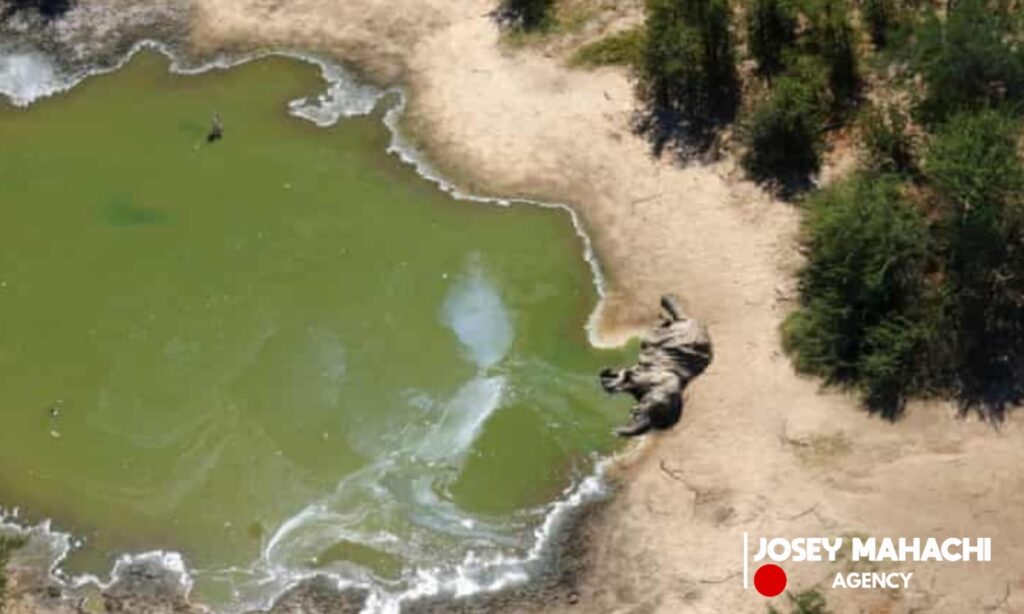By : Lloyd Mahachi
A new study has revealed that over 350 elephants, which died mysteriously in Botswana’s Okavango Delta in 2020, were likely poisoned by toxic water. The incident, described by scientists as a “conservation disaster,” saw elephants exhibiting unusual behavior, such as walking in circles, before collapsing and dying.
This event marked the largest documented elephant die-off with an initially unknown cause. Speculation ranged from cyanide poisoning to an unidentified disease. However, a paper published in Science of the Total Environment suggests the deaths were caused by toxic blooms of blue-green algae, also known as cyanobacteria, in waterholes.
The climate crisis has been intensifying harmful algal blooms worldwide. Researchers analyzed satellite data to study the distribution of elephant carcasses in relation to water sources. They discovered that elephants typically walked over 100 kilometers from the waterholes and died within 88 hours of drinking contaminated water.
After examining 3,000 waterholes, the team found that those with increased cyanobacteria blooms in 2020 corresponded to areas with high concentrations of elephant carcasses. The researchers believe the elephants had no alternative but to drink from the toxic waterholes, which proved fatal.
This tragedy is not an isolated incident. In the same year, 35 elephants in neighboring Zimbabwe died from bacterial infections linked to prolonged drought conditions. Similarly, in 2015, 200,000 saiga antelope in Kazakhstan succumbed to a climate-related outbreak of hemorrhagic septicemia, a type of blood poisoning.
Experts warn that mass-mortality events are becoming more frequent as global temperatures rise. Climate change is disrupting weather patterns, leading to severe droughts, heavy rainfall, and conditions that promote harmful algal growth. Southern Africa experienced its driest year in decades in 2019, followed by extreme rainfall in 2020. This alternation caused sediment and nutrients to accumulate in waterholes, triggering unprecedented algal blooms.
As the planet continues to warm, much of the world is projected to become hotter and drier, with periodic heavy rains. These changing conditions are expected to increase the frequency and severity of toxic algal blooms, threatening both wildlife and human populations.
The study emphasizes the urgent need for water quality surveillance. Dr. Arnoud van Vliet from the University of Surrey remarked that the findings support the hypothesis that cyanotoxins in drinking water were responsible for the mass deaths.
Researchers advocate for preventive measures to mitigate climate change’s effects on ecosystems and wildlife. These include monitoring water quality, reducing pollution, and safeguarding natural habitats.
The study, a collaborative effort involving the University of Botswana, the Natural History Museum (London), Queen’s University Belfast, and Plymouth Marine Laboratory, highlights the importance of international cooperation in addressing the ecological impacts of climate change.
The deaths of the elephants in Botswana serve as a stark warning about the devastating effects of climate change on global ecosystems. To prevent further tragedies, immediate action is required: reducing carbon emissions, transitioning to renewable energy, and protecting habitats.
The climate crisis is a shared challenge that demands a unified global response. By addressing the root causes and mitigating its impacts, we can protect wildlife, ecosystems, and human communities. The future of our planet depends on our collective efforts.
Editor : Josephine Mahachi

